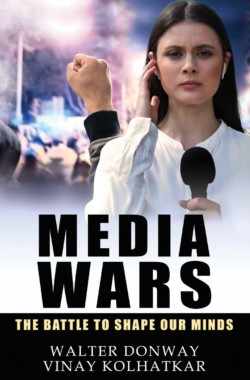Ten Bucks for Your Thoughts
Don’t take it! Bargain for more!
If your sweetheart murmurs, “A penny for your thoughts,” reply, “Yeah, like 500 years ago.”
It was almost 500 years ago that the English divine, Thomas More, now St. Thomas More, wrote, in 1522, in an essay entitled “Four Last Things”:
Could the British penny in 1522 purchase what $10 purchases today? There are many measurements of the changing value of money, but I am not aware of any sound calculation beginning as far back as the Sixteenth Century—so I guessed. I think that my guess was conservative.
A “penny,” a “quarter,” and a “dollar” are just words. Today, they are words with no fixed meaning—or a meaning that changes day by day. For example, today, November 3, the U.S. dollar rose to an almost seven-year high in its exchange rate with the Japanese yen. In the foreign exchange markets, since May, the dollar has soared in value almost 10 percent against a basket of other foreign currencies.
The value of the dollar you carry in your pocket everywhere, every day, all your life is anchored to nothing. This was not always the case.
So much has been written about money, its nature, its vexed relationship to “real value”—and about the mighty U.S. dollar—that one must cut, slash, through to a few essentials. Let me borrow that most hackneyed of titles:
Ten Things to Know About the Dollar
Since 1913, when the U.S. Government nationalized control of our currency, the U.S. dollar has lost at least 97 percent of its purchasing power. Roughly, what you could buy for one dollar in 1913 costs about $20, now. If you earned a dollar in 1913 and kept it in a drawer, today it would be worth about three cents. What happened in 1913? The federal government created the Federal Reserve System, a central committee and network of banks that, in effect, took over control of money, which, until then, had been created by the states or by banks, a largely private matter.
The value of the dollar did not always erode year after year. During much of the Nineteenth Century, the dollar held its value—or gained value. Because every dollar at any time could be exchanged, at a set rate, for gold, banks could not create money unless they had gold to back it—and the amount of gold on average increases very slowly. Thus, the productivity of the country, the amount of goods produced, grew much faster than the amount of gold or gold-backed dollars—so prices tended to fall.
Creation of the Federal Reserve System was justified as a way to prevent financial panics, like the great panic of 1907, but within less than 20 years, the Fed had created a financial bubble that burst in 1929, bringing on the Great Depression. In 2007, after two decades that were the most active in the history of the Fed, the United States plunged into the worst financial panic in its history. The Fed had sought to maintain a permanent prosperity, with no recessions, by constantly enlarging the money supply: much of this went into the real estate, banking, and investment sectors—those that precipitated the financial panic, crash, and a global depression.
In 1933, the new administration of Franklin Delano Roosevelt took the country off the gold standard, abrogated contracts written in terms of gold, and made it a crime for any U.S. citizen or company to own (“hoard”) gold. All gold had to be sold to the government for $20.67 an ounce (it had remained at that price for 100 years). It was probably the first time in all history that people lost the right to own gold. The Roosevelt administration ended the gold standard so that the government could print new dollars without needing gold to back them. The theory was that giving Americans more “purchasing power” would get the economy out of the Great Depression. It didn’t; but each new dollar printed to give someone “purchasing power” reduced the value of dollars already in the hands of people who earned them. The great debasement of the dollar began.
Beginning in 1933, when government seized the power to print new dollars unbacked by gold—or anything—the U.S. dollar has lost value steadily for 80 years. Of course, there have been intermediate fluctuations. Since May, about six months, the U.S. dollar has gained purchasing power against a basket of foreign currencies that make up the U.S. Dollar Index. Chief among those currencies are the Euro, Yen, and Swiss franc. This temporary rise has resulted entirely for political decisions, especially those of the Fed, which finally announced cessation of the largest money-creating spree in history.
U.S. citizens who watch the value of the U.S. dollar, and their savings, shrinking year after year cannot refuse to accept dollars. Our legal tender laws make the dollar “legal tender for all debts public and private.” If I owe you $1,000 and offer to pay in dollars you cannot refuse; you cannot, for example, demand payment in gold.
Some 80 years of money creation (inflation) has not destroyed acceptability of the dollar abroad–not entirely–because at the height of American power after World War II, in 1946, the governments of the world agreed at the Bretton Woods conference to accept the U.S. dollar as the world’s official reserve currency and standard of exchange. That’s right: Other nations are required to accept the U.S. dollar in international exchange, and, for example, all purchases of oil and other energy are in dollars and central banks hold much of their foreign reserves in dollars. The United States agreed, in turn, to exchange the dollar for gold at a fixed rate (an offer to other nations but not to American citizens).
In 1971, the United States broke this promise to foreign nations to exchange dollars for gold. The Fed had created more and more dollars and the dollar had lost value; the world economy, and especially Europe, had been flooded with dollars. The United States simply didn’t have enough gold in Fort Knox to keep its promise. Since 1971, in particular, inflation in the United States and much of the world—the debasement of the dollar’s value—have accelerated hugely.
Despite the United States’ breaking its side of the bargain (to exchange dollars for gold), the U.S. dollar has remained the world’s official exchange and reserve currency; but foreign nations now are in active rebellion against this. No longer required to have gold to back the dollar, even in international exchange, the dollar had lost the last anchor of its value. Money creation by the Fed soared, and, since 1971, the value of the dollar has plunged. Other nations holding dollars, which they were paid for their goods and services, and used as bank reserves, watched the value of the dollar—and their foreign reserves—shrink year by year. They are rebelling. Both China and Russia, for example, have now secured agreements with groups of nations to conduct exchanges in ways that bypass the dollar. China today is the world’s largest purchaser of gold, using its huge earnings from sales to the United States and Europe. Most observers believe that China’s goal is to supplant the U.S. dollar with the yuan as the world’s official exchange currency.
In 1975, yielding to public protest, the U.S. government again permitted its citizens to own gold—but not to use it as a medium of exchange. During the period that gold had been a strict government monopoly, there had been an official gold price: $35 an ounce. But when Americans could buy and sell gold, exchanges in the open market set the gold price. Between 1975 and today, the price of gold in dollars has risen from $35 to about $1200 an ounce. For thousands of years, gold has been a yardstick of the “real” value of paper money created and manipulated by governments. The price of an ounce of gold since 1975 has increased 3,400 percent. Gold has not become more valuable relative to other real goods; the entire change in price results from the dollar’s precipitous loss of value.
There you go, this is what central banking does to the economy—the precise opposite of what their expressed aims are—it creates instability, and rampant inflation. How do they hide this? How do they get away with it? That’s a story for a future piece.
« Australia’s Ron Paul: David Leyonjhelm talks to Savvy Street The Ultimate Power Lust: A British Spy’s Great Betrayal »










